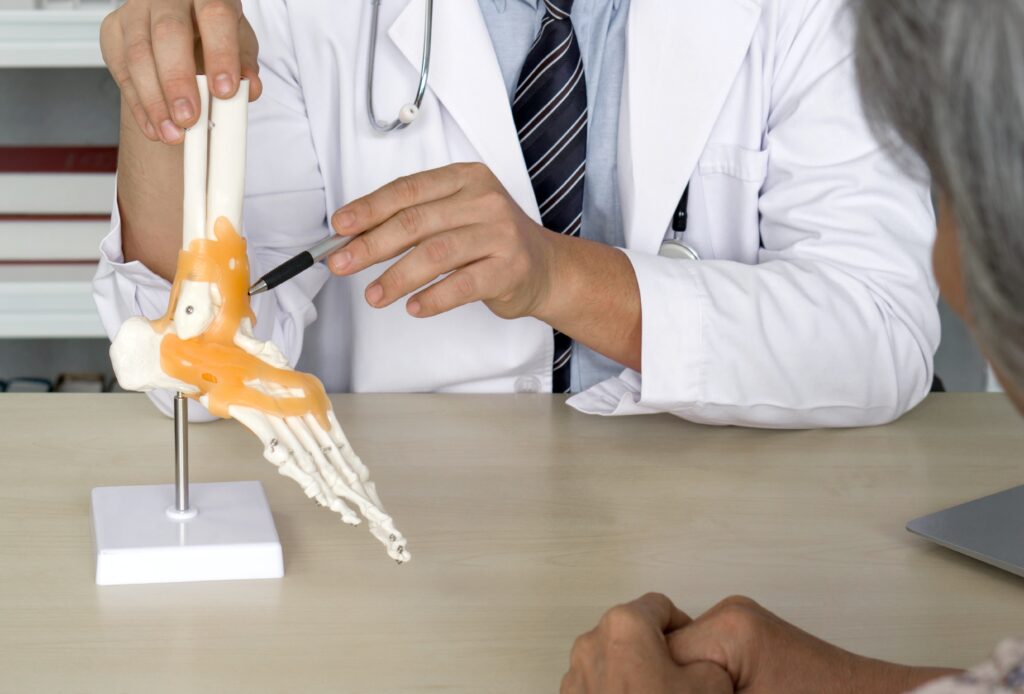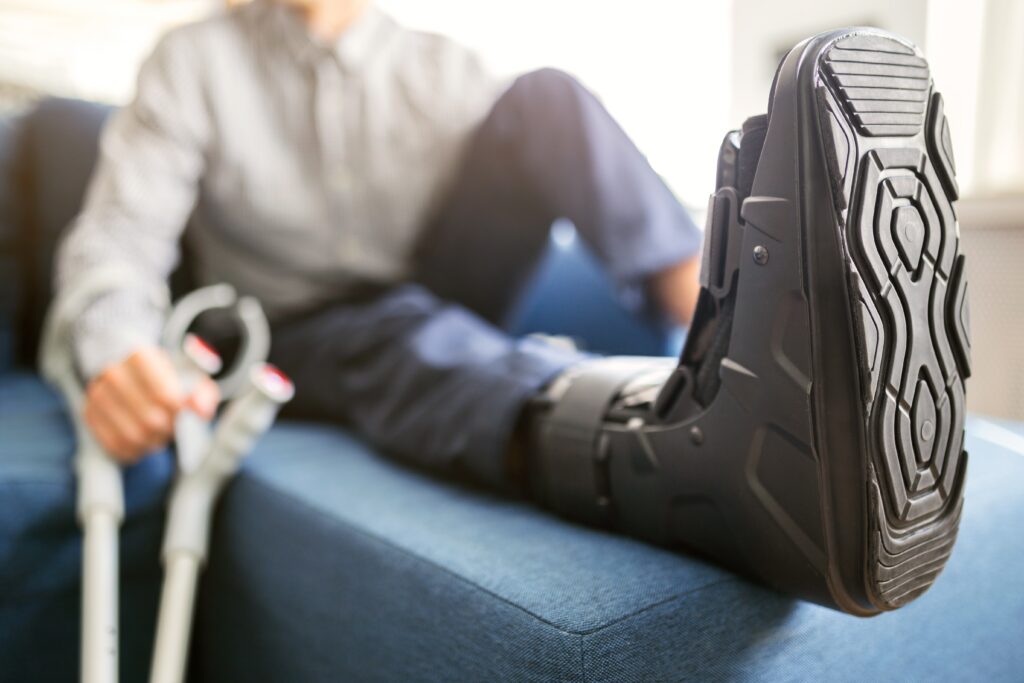Chad Boyington, 52, a forklift operator from Klemme, Iowa, and his wife Darci have shared a love of travel for over 23 years. One of their favorite destinations is Hatfield, Wisconsin, where they rent a cabin three times a year, bring their UTV, and explore the great outdoors.
During one of these Wisconsin getaways last fall, Chad took a misstep from the cabin patio onto a gravel surface while picking up some clothing. In an instant, he was on the ground.
“My head was down by my foot and ankle, and I heard a snap, snap,” Chad recalled. A visit to the emergency room confirmed the worst: an X-ray showed he had fractured his left ankle.

Chad’s primary care provider, Julie Larson, ARNP, at Hancock County Health System in Britt, referred him to Dr. Tyler Mulkey, DPM, a podiatrist specialist at Mason City Clinic.
“Dr. Mulkey is a straight shooter. He doesn’t sugarcoat anything. But I could tell by the way he talked to me and explained things that he genuinely cared about helping me,” said Chad.
Dr. Mulkey diagnosed Chad with a bimalleolar equivalent fracture, which involves injuries to both the medial ankle and the lateral malleolus. This type of fracture is considered unstable and typically requires surgical intervention.
“We placed a plate and screws on the outside of the ankle (the fibula),” said Dr. Mulkey. “This type of ankle surgery is one of the most straightforward for fractures, as it helps restore stability during the healing process.”
After surgery, ankle fractures typically take six to eight weeks to heal. Some patients experience stiffness or decreased strength, which is why physical therapy is often recommended for optimal recovery.
While casting is an option for some fractures, surgical treatment is often preferred because it enhances stability and reduces the overall recovery timeline.
After Chad’s surgery on October 15, 2024, he relied on a walker for 5-6 weeks, then transitioned to a walking boot. Now, three months post-surgery, he is in a walking brace and well on his way to a full recovery.
“Dr. Mulkey answers every question, no matter how small,” Chad said. “One day, I asked him, ‘This might sound dumb, but how do I get in and out of my truck?’ He said, ‘That’s not a dumb question at all,’ and then demonstrated it for me in the office.”
After practicing at home, Chad finally got back behind the wheel of his beloved pickup truck. “After almost three months of not driving, I told Darci, ‘We are going for a ride!’”

Chad is eager to return to work as a forklift operator at the Winnebago factory and resume his favorite travel adventures—to Wisconsin, out West, and down South. He’s also looking forward to shoveling snow again—a task that once seemed impossible after his injury.
Healing & Rehabilitation for Ankle Fractures
The healing time for ankle fractures varies based on the severity of the injury. According to the AAOS, most fractures take at least six weeks to heal, while ligaments and tendons may require additional time.
Post-surgery pain is normal and will be managed using a combination of:
⚠️ Opioid Warning: While opioids can help manage pain, they are highly addictive. Patients should use them only as prescribed and discontinue use as soon as pain subsides.
Rehabilitation is essential for full recovery, regardless of the treatment method. Once fractures begin to heal and the walking boot is removed, patients will:
It is common to experience stiffness and swelling for months after an ankle fracture, but physical therapy can improve mobility and prevent long-term stiffness. The swelling can be relieved by elevating your leg.

Dr. Tyler Mulkey, DPM, is a board-certified podiatric medicine specialist in the Orthopedics Specialty at Mason City Clinic, where he treats ankle and foot injuries, fractures, and chronic pain.
Dr. Mulkey’s passion for foot and ankle surgery stems from his background in sports and running.
For appointments and more information, visit www.mcclinic.com/services/orthopedics or call 641-494-5210.
Up-to-date. Down-to-earth. Close to home. Lots of great reasons to make Mason City Clinic
your first choice for all your family’s specialty healthcare needs.
250 S. Crescent Drive, Mason City, IA 50401
Tel: 641.494.5200
Toll Free: 800-622-1411
Fax: 641.494.5403